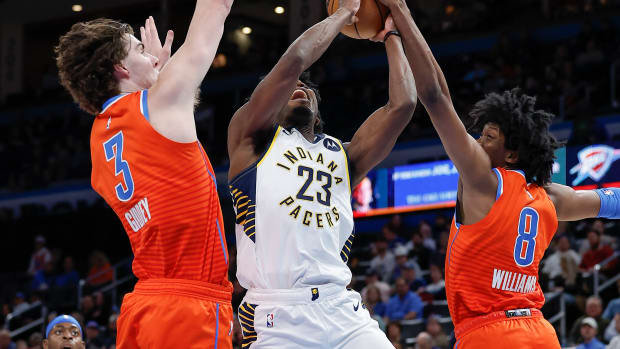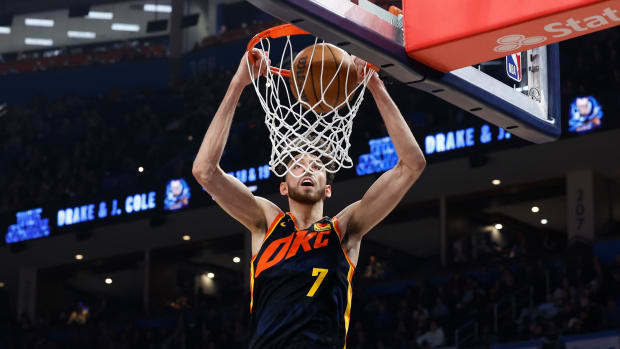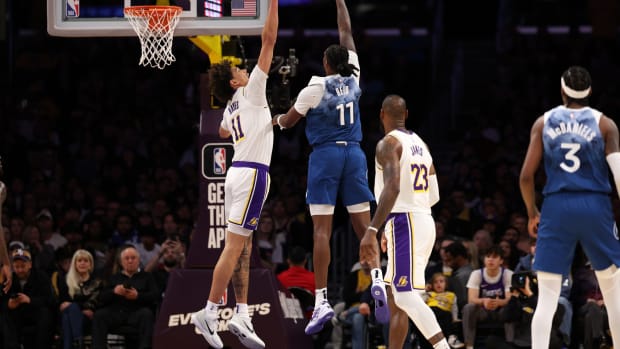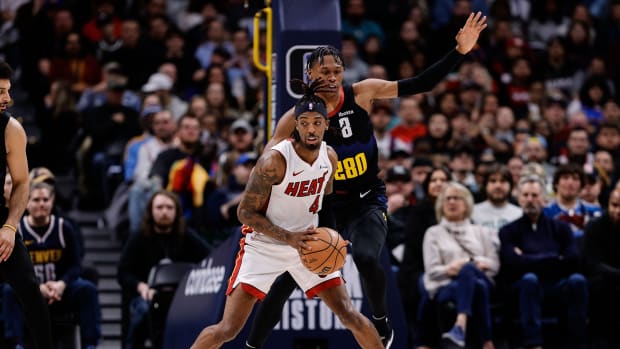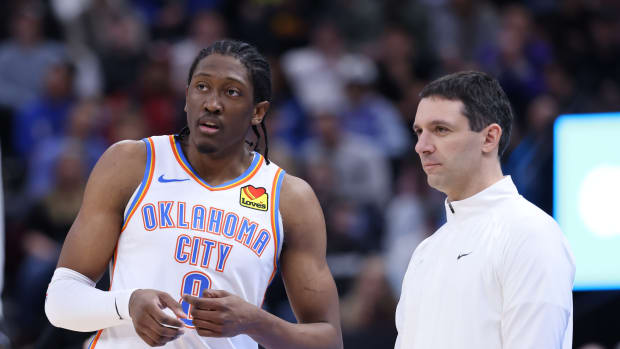LaMarcus Aldridge's Smart Work in San Antonio Is Being Rewarded
In retrospect, the extension was the tell. It was back in mid-October that the Spurs blindsided the league with a three-year, $72.3 million recommitment to LaMarcus Aldridge—the very same star forward they had explored trading just months earlier. What stopped them from following through on a deal was the market itself; the rest of the league was so down on Aldridge after a so-so year that the Spurs found they were high on him by comparison.
So instead, they brokered an extension. The confidence between both parties seems to stem from an offseason conversation between Aldridge and Spurs coach Gregg Popovich, in which both parties reportedly laid out their shortcomings and made plans to rectify them. Aldridge had been out of sorts. Nine years in Portland had imparted Aldridge's game with a certain rhythm. Without it, he drifted—away from what he does best and out of his element.
Solo Artists: Chris Paul, James Harden Thriving While the Other Sits
The rise of Kawhi Leonard played its own destabilizing role. Much of the conversation among fans and media concerning team dynamics is overly simplistic; whenever a team like the Spurs deals with some change to its pecking order, many assume that any troubles that arise are matters of ego. The word "alpha" gets thrown around with hilarious frequency. What bothered Aldridge seemed more a matter of logistics. In playing a less central role, Aldridge got fewer shots and touches than he was accustomed. With fewer touches, he didn't run the floor as hard, and without that, he often didn't establish favorable post position. When the ball finally did come his way, Aldridge was very much motivated to shoot but not exactly set up for success.
Aldridge reportedly took ownership of that in his meeting with Popovich, who met him in the middle. Both men agreed that the post should be more of a priority and have delivered. According to Synergy Sports, the Spurs dedicate a greater percentage of their offense to post-ups than any other team. Aldridge himself is the second-most prolific post player in the league this season, and not coincidentally playing the best basketball of his career. A good-faith conversation and a change in priorities has made all the difference. As Aldridge put it before the season started: "...knowing that it's going to be a point of emphasis, I'm going to run harder. I'm going to duck in harder, and they're going to look for me faster. So it's going to be better."
This is a palpable change in the way Aldridge and the Spurs play. San Antonio has long been willing to work the post, but is now prioritizing those touches differently. If Aldridge slinks his way into deep position or draws an obvious mismatch, his teammates look for him immediately:
Smart work is being rewarded. The importance of the low post is diminished in the sense that bigs can no longer pound their way to the basket with a long back-down. Defenses are too clever for that. But if a player as tall and skilled as Aldridge edges in for a deep catch and a team of capable entry passers responds quickly, there's only so much opponents can really do.
How LaMarcus Aldridge’s Extension Impacts the Spurs' Future
Pau Gasol and Kyle Anderson (currently out with an MCL sprain) have been instrumental in this regard. Both make excellent passes into Aldridge from their vantage point at the top of the floor, each feed providing its own touch of motivation. If Aldridge creates these opportunities, he can trust that the ball will come. Should the defense respond to deny him, Aldridge can pass the ball out with the confidence that the Spurs are among the most consistent re-posting teams in the league. Trust on both sides has resulted in Aldridge shooting a career-best 74.3% within three feet of the rim, per Basketball-Reference.
The same process applies to Aldridge's lights-out work against switches this season. No matter their initial intention, the Spurs turn their focus immediately to Aldridge when one of his screens triggers a switch against a much smaller defender:
This version of Aldridge looks almost unrecognizable compared to the one that dawdled through Golden State's switches in the Western Conference finals. Reinforcement changes everything. Telling Aldridge to just accept his role or to "be more assertive"—another classic NBA nothingism—doesn't accomplish much. Instead, with a little accommodation, the Spurs have stoked the most productive streaks of their All-NBA forward's game. With better positioning comes more drawn fouls, more offensive rebounds, and a far greater return. All it took to get Aldridge there was some basic assurance.
San Antonio was on to something with Aldridge, as tends to be the case. Only eight players in the league this season—seven of them MVP candidates—are scoring as much and as efficiently. Less than a year removed from the trading block, this is the company Aldridge now keeps. No one can know how Leonard's eventual return from injury might unsettle things, though there's promise in how deliberately the Spurs have evolved to this point.
Virtually every one of San Antonio's offseason goals regarding Aldridge has come to pass. The early post-ups have been a clear and consistent success. Aldridge's emphasis on his mobility has resulted in more effective drives and duck-ins. At Popovich's urging, Aldridge is shooting more threes than ever before in his career. The Spurs are known for many things, but this is what they do: Hatch a plan and execute it, often beyond anyone's wildest expectations.































